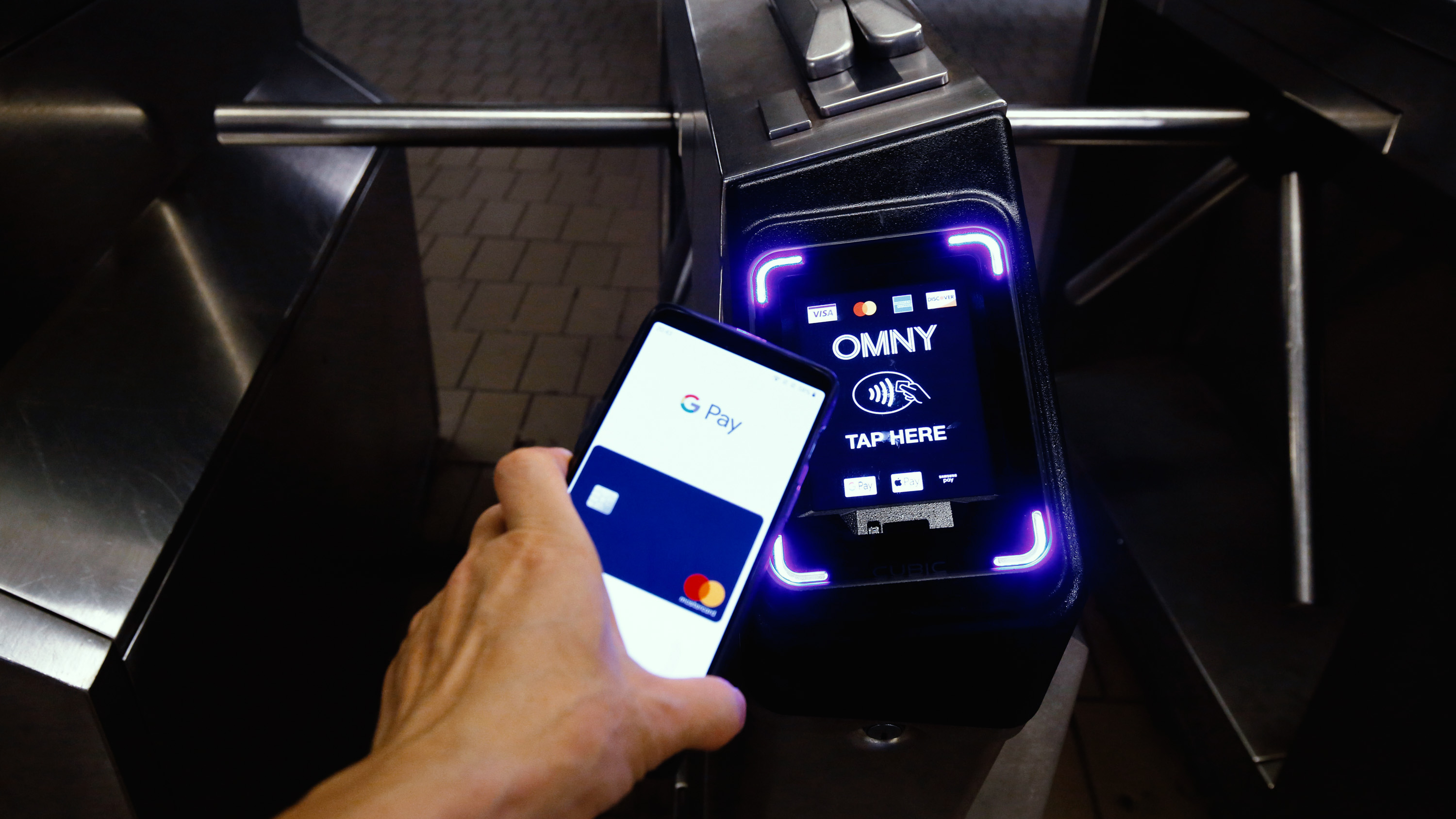Public transport is ditching cash—but here’s why that’s ok
The move to contactless fares might not have as much of an impact on accessibility as you think.

There are still parts of Philadelphia’s SEPTA transportation system that accept tokens. But today, in nearly every major American city, you’ll see transit riders tapping their way onto buses and subway platforms using their phones. The shift has been swift. Like so many things consumers brushed off as needlessly complicated before the pandemic—QR codes, order pickup at retail stores, grocery delivery—contactless transit fare collection has proved its convenience and been normalized.
What will this change mean for less-privileged riders—those without smartphones or credit cards? Perhaps not much. Cash is likely to remain in some corners of transit systems, says Candace Brakewood, a professor of civil and environmental engineering at the University of Tennessee in Knoxville. That’s because the Federal Transit Administration requires large urban networks to ensure that any proposed fare changes don’t have a disproportionate impact on low-income and minority riders. And the kind of compensatory gymnastics that cities will need to perform to comply with this requirement may actually make it easier for even more people to use public transit.
As bus systems experiment with eliminating onboard fareboxes, for example, operators will need to expand their fare vending networks—which include street-level vending machines as well as national chains like CVS and local businesses like check cashing centers. This is already happening in New York City, which has the largest public transit system in the country.
The city is transitioning from its paper-thin, magnetic-stripe MetroCards to OMNY, a contactless system that uses near-field communication. OMNY supports “open-loop payments”—a special card or app isn’t needed to get onboard. Instead, you can simply swipe your existing contactless credit or debit card or wave a digital-wallet-equipped device. OMNY also offers a “closed-loop” option in the form of a physical card that can be reloaded with cash.
In a statement, the city’s Metropolitan Transportation Authority said that it has “greatly expanded” its retail network since OMNY cards became available for purchase this past fall, citing nearly 1,000 partners selling and reloading them. It aims to quadruple that number once the system is fully activated.
It’s easy to see the increased use of mobile payments as counter to the egalitarian ethos of public transit. But the technology can open up access to systems that would otherwise be difficult to navigate. “I struggle to think of a product that is more challenging to purchase when you come to a new city than public transportation,” says Joshua Schank, managing principal at InfraStrategies and a senior fellow at the UCLA Institute for Transportation Studies.
Schank, who created the Office of Extraordinary Innovation at the Los Angeles County Metropolitan Transportation Authority in 2015 and headed it until this past January, sees the ultimate goal as payment integration between mobility systems—bike-shares, scooters, buses, trains—across cities as well as within them. But one way or another, contactless, open-loop payment will likely play the role that cash did in the early days of public transit: it will be accepted everywhere.
Rachel del Valle is a freelance writer based in New York.
Deep Dive
Humans and technology
Building a more reliable supply chain
Rapidly advancing technologies are building the modern supply chain, making transparent, collaborative, and data-driven systems a reality.
Building a data-driven health-care ecosystem
Harnessing data to improve the equity, affordability, and quality of the health care system.
Let’s not make the same mistakes with AI that we made with social media
Social media’s unregulated evolution over the past decade holds a lot of lessons that apply directly to AI companies and technologies.
Stay connected
Get the latest updates from
MIT Technology Review
Discover special offers, top stories, upcoming events, and more.